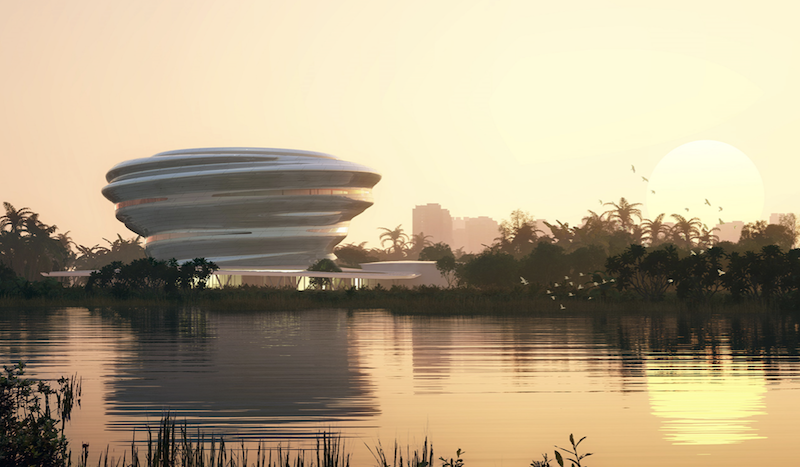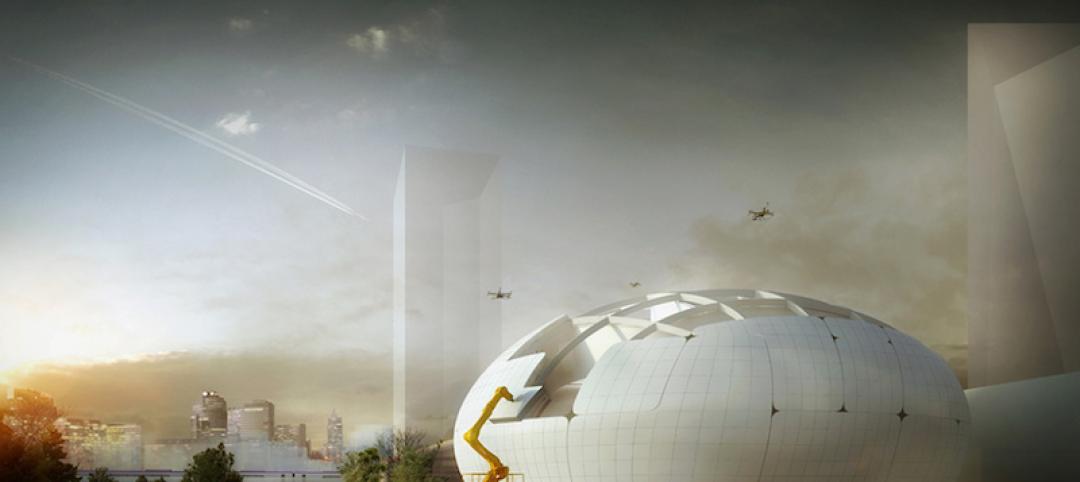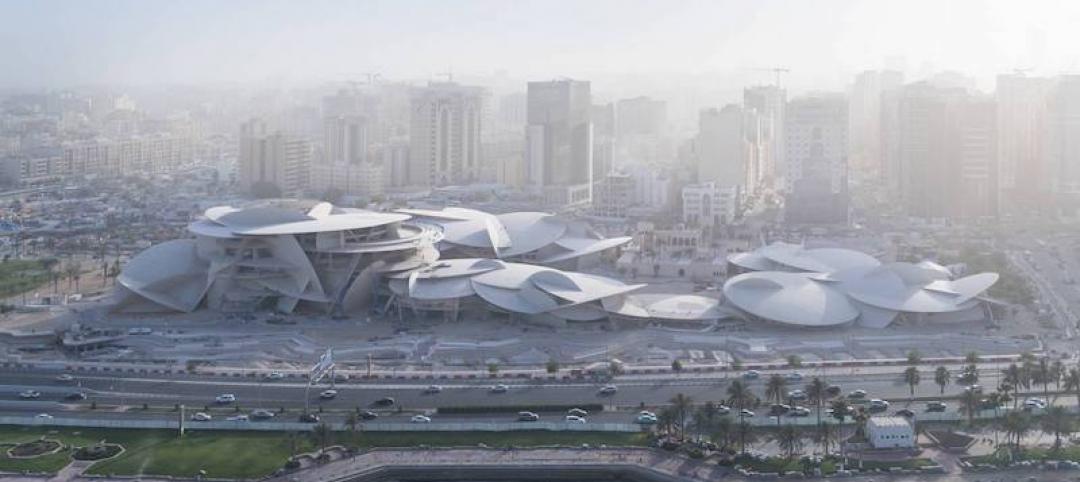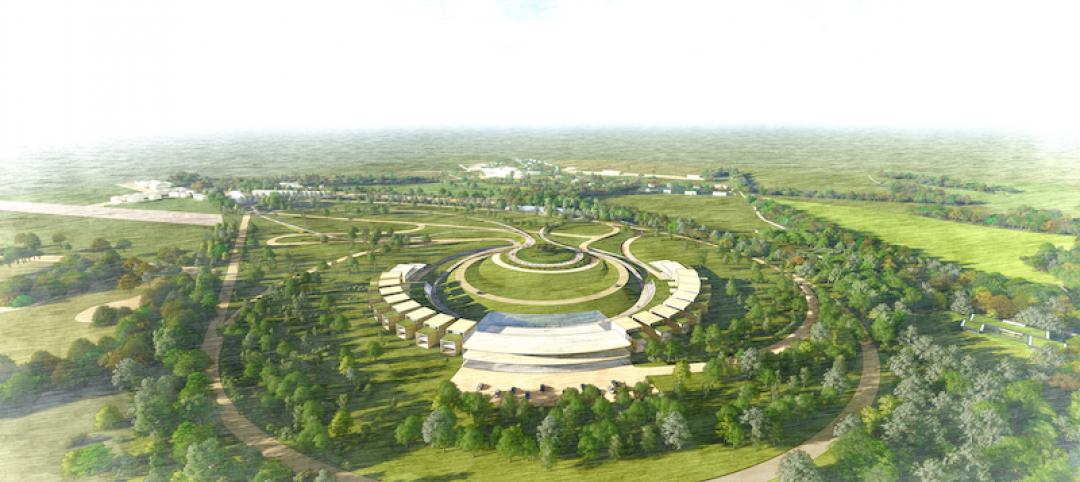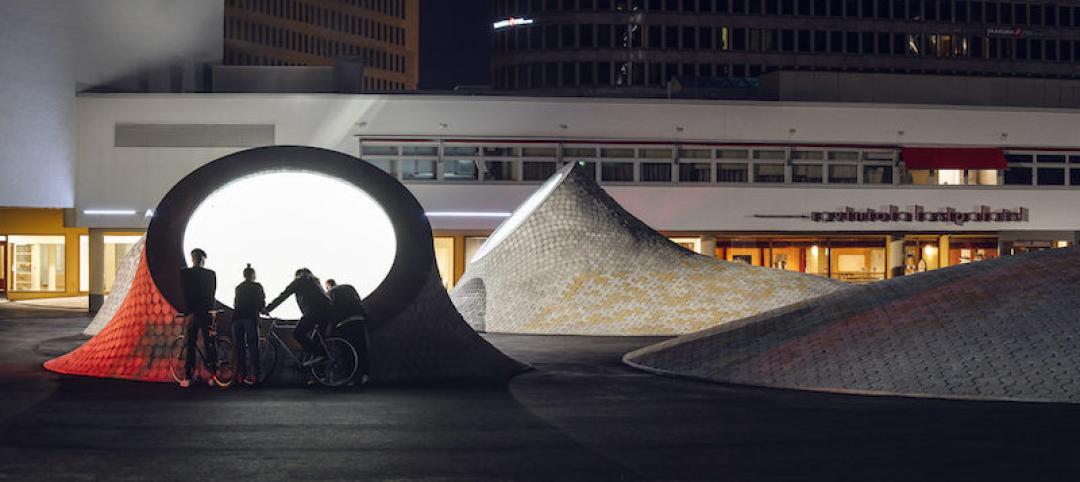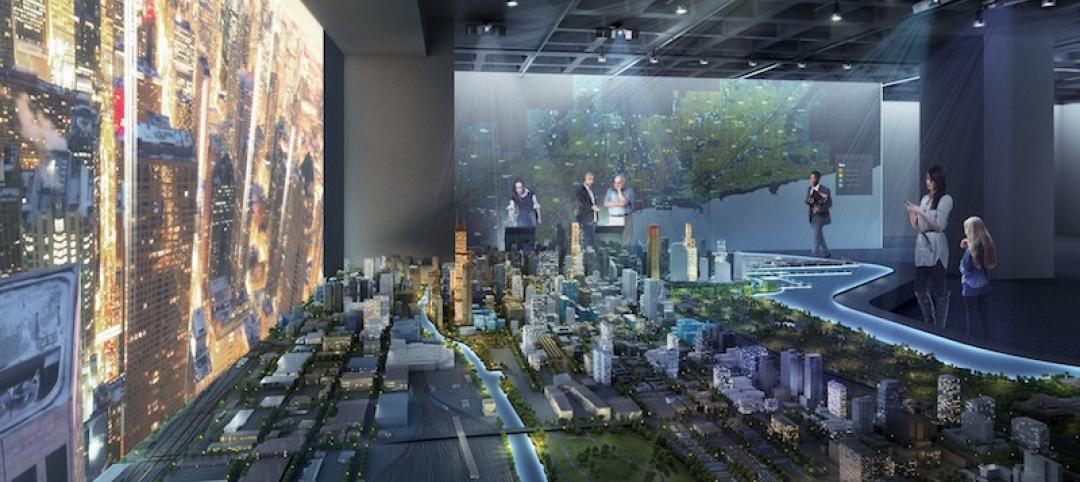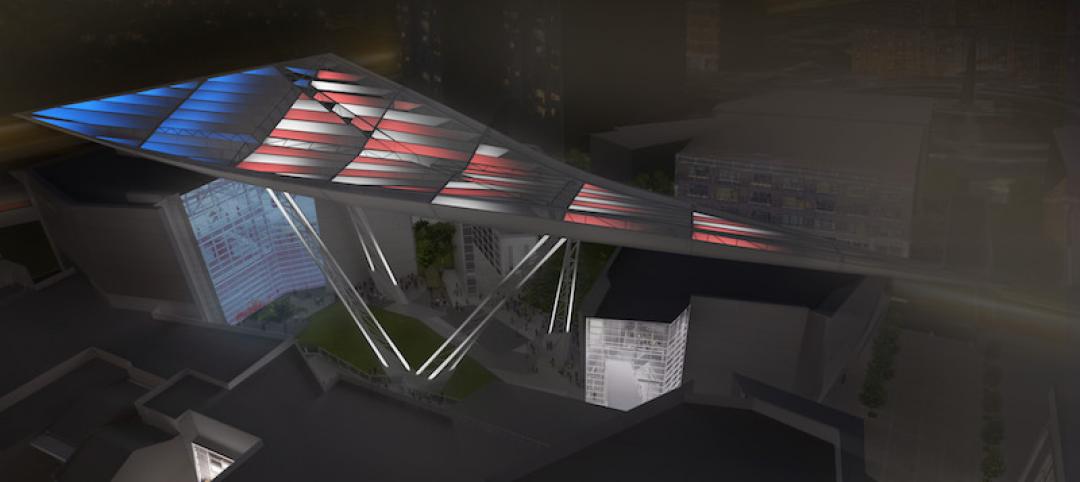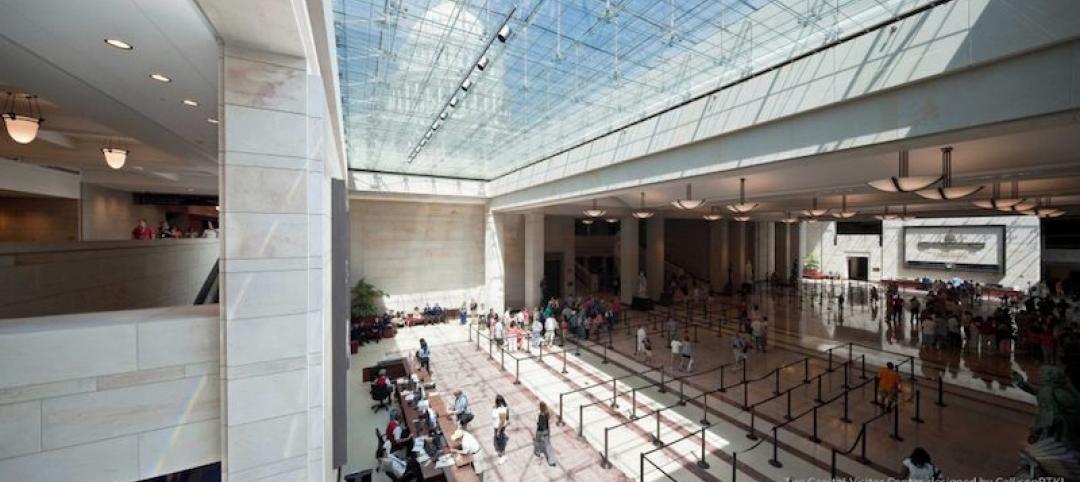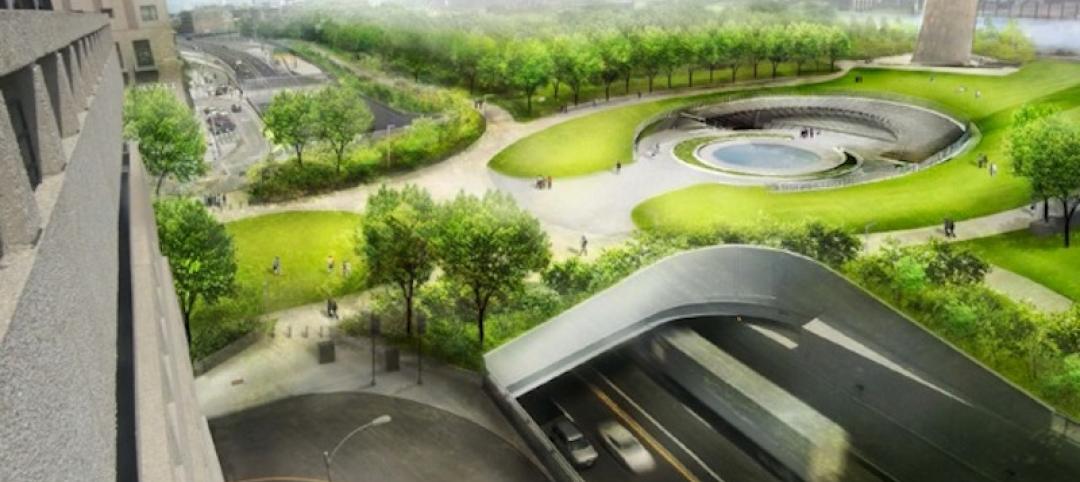MAD Architects has revealed the design for the Hainan Science and Technology Museum, located on Haikou’s west coast in Hainan province, shortly before the project is set to break ground at the end of August.
The 500,000-sf museum draws from the site’s dual urban and natural context, set against the backdrop of a tropical rainforest. The museum’s main pavilion is shaped like a cloud in dialogue with nature. From a distance, the building is designed to emerge from the city, while it will appear to visitors entering the museum area to be floating above the jungle.

About 299,000 sf of the museum’s total area is located above ground and includes permanent exhibition space, a planetarium, a giant-screen theater, and a flying theater. The museum’s interior structure comprises three floor-to-ceiling cores, curved trusses, spiral ramps, and a roof, that are all exposed to achieve harmony between the architectural forms and structural system. A skylight in the museum’s dome bathes the atrium in natural light while a sloping, spiraling exhibition space ascends from the central hall over five floors to connect visitors across the museum.
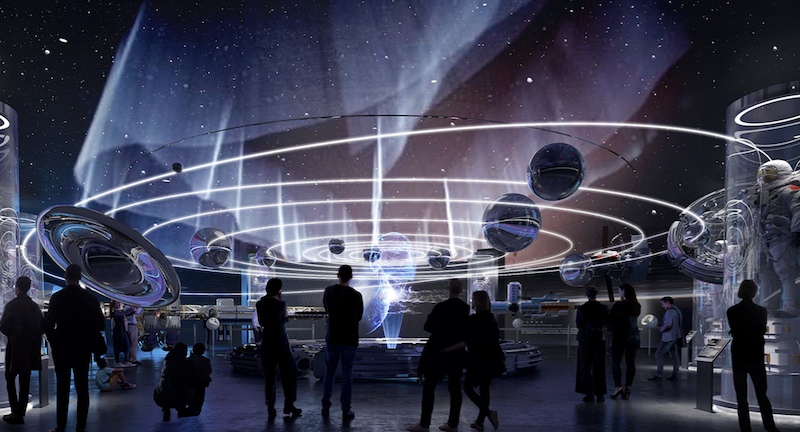
The exhibition experience begins on the fifth floor where the elevator opens to a 360-degree viewing platform with the sea and cityscape visible in the distance. Visitors on the top floor begin by exploring the technology and space galleries before proceeding down the ramp to the ocean and life science galleries on the fourth floor. The math and science galleries are on the third floor and the multimedia interactive experience area and the children’s playground are on the second floor. As visitors travel down the ramp, the can simultaneously enjoy the scenery and the exhibitions and a gallery running alongside the ramp extends the viewing experience.
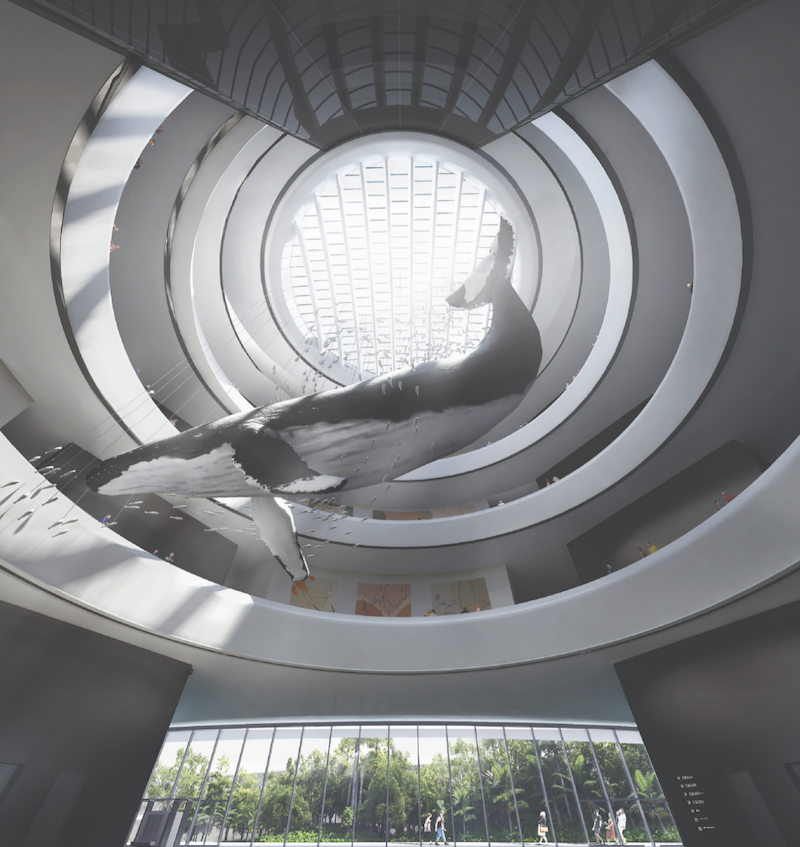
The museum’s facade of fiber-reinforced plastic gives the building a distinctive silver, reflective exterior from both near and far. An undulating canopy extends from the main pavilion in all directions to create a space specifically conceived to accommodate the public in Haikou’s humid and rainy climate. The north side of the canopy also hosts the giant screen and flying theater. The southwest corner hosts the planetarium and observatory. Outdoor public spaces include a crater-like sunken plaza and a reflecting pool.
The Hainan Science and Technology Museum is slated for completion in 2024.
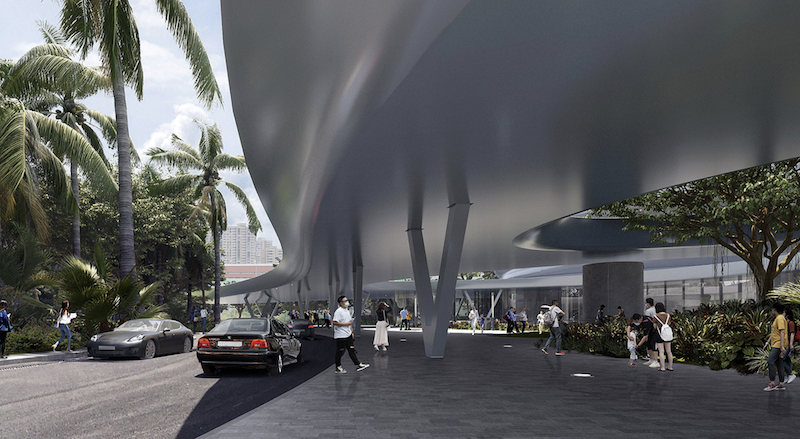

Related Stories
Museums | Feb 27, 2019
Seoul’s Robot Science Museum will be built by robots
Robots will be in charge of jobs such as molding, welding, and polishing metal plates for the museum’s façade, and 3D printing concrete.
Museums | Feb 22, 2019
The National Museum of Qatar takes its design from the desert rose
Jean Nouvel designed the museum.
Museums | Jan 16, 2019
Disused British airfield to become an automotive museum
Foster + Partners is designing the facility.
Museums | Sep 10, 2018
Helsinki’s underground art museum opens to the public
JKMM designed the space.
Architects | Jun 14, 2018
Chicago Architecture Center sets Aug. 31 as opening date
The Center is located at 111 E. Wacker Drive.
Museums | Jun 1, 2018
The new Orange County Museum of Art will be Orange County’s largest center for arts and culture
Morphosis designed the building.
| May 24, 2018
Accelerate Live! talk: Security and the built environment: Insights from an embassy designer
In this 15-minute talk at BD+C’s Accelerate Live! conference (May 10, 2018, Chicago), embassy designer Tom Jacobs explores ways that provide the needed protection while keeping intact the representational and inspirational qualities of a design.
Museums | Apr 2, 2018
‘Canopy of Peace’ to rise 150 feet above The National WWII Museum
The piece will tie together the six-acre campus.
Museums | Mar 27, 2018
The future of museums: The ultimate visitor experience
Kirill Pivovarov discusses how museums and retail stores are influencing each other to create a better visitor experience. Special thanks to Paul Conder for contributing his retail insights.
Museums | Feb 26, 2018
*UPDATED* Design team unveils plans for the renovated and expanded Gateway Arch Museum
The goal of the project is to create closer and more robust connections between the Gateway Arch Museum and the landscape of the Jefferson National Expansion Memorial.


